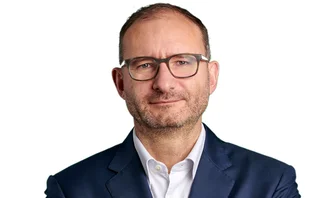
Losses expose risk management flaws

While the world waits for details on how a trader on Société Générale's arbitrage desk could notch up losses totalling EUR4.9 billion, early information suggests a monumental failure in risk management and control processes at the bank.
In the immediate aftermath, several questions have been raised: how was Jerome Kerviel, the trader allegedly at the centre of the scandal, able to build up positions totalling EUR50 billion in notional, and why did SG not ask serious questions when making the margin payments on those trades? Furthermore, why did the back office not pick up on fictitious over-the-counter trades the bank claims Kerviel used to mask his positions?
The trader had balanced a portfolio of directional futures trades on the Dow Jones Eurostoxx 50, Dax and FTSE 100 indexes with another portfolio of fictional opposing positions, making his overall risk appear low once the trades had netted out, the bank claimed. He camouflaged the existence of the second portfolio by selecting trades that did not require cash movements, margin calls or immediate confirmation, and falsified documents and computer system access codes. He also used a strategy of sequential cancellations of different trades, allowing him to roll trades over without being detected, the bank added. However, SG admitted the instruments in his first (real) portfolio had required margin payments, which the bank had made without becoming suspicious.
Dealers at rival firms say they are stunned at the losses, suggesting a major breakdown between front and back offices. "In my experience, the back-office guys are on at you quickly if there is any discrepancy in a trade," says one London-based head of equity derivatives at a European bank. "This guy appears to have been a junior trader on the delta-one desk - not a business dealing in big risk. So how did he rack up such massive losses? It indicates severe failures in their internal processes, especially if they were forewarned about his activities."
Another London-based head of equity derivatives at a US bank believes backlogs in back-office processing of equity derivatives trades may have contributed to the problems. "Normally, when a trade is entered into the system, the back office contacts the counterparty and verifies the details. It is well known this doesn't always happen," the banker explains. "It doesn't happen for a variety of reasons - sometimes because counterparties won't confirm until you've sent a full confirmation from your side, or the back office on their side doesn't react until the trade is entered on their system."
According to the International Swaps and Derivatives Association's 2007 Operations Benchmarking Survey, the confirmation backlog in equity derivatives is significantly worse than other asset classes. The survey revealed only 14% of OTC equity derivatives were confirmed on trade date as of December 31, 2006, compared with 40% of currency options and 31% of credit derivatives. Additionally, the proportion of confirmations outstanding at equity derivatives dealers - the number of outstanding confirmations divided by the daily volume of new trades - was 13.7%. The equivalent proportion for credit derivatives was 4.9% over the same period.
Given the size of losses, it seems astonishing the back office did not uncover the deception sooner. However, Philippe Carrel, New York-based executive vice-president at Reuters Trade and Risk Management, says the reality is not straightforward.
"Futures exposures are often marked-to-market using profit/loss plus margin, not notional amounts because there is no presumed credit risk," he begins. "If you have someone able to allocate deals to fake portfolios and let him square himself before the end of day or next review of exposure limits, it will be difficult to spot. The back office would have just seen tiny spreads or amounts coming through on margin accounts."
Even so, dealers say the back office should, in normal circumstances, be able to pick up on trading activity of this magnitude. "The only explanation for why the back office did not pick anything up is that he had opportunities to hack into the system. He seems to have been able to create the trade in the front-office system and remove it from the back office so no-one noticed," believes Jean-Baptiste Guademet, London-based professional services manager at risk management solutions provider Sophis. "For that, he would need information on how different systems worked and password access."
Both Guademet and Carrel argue that any institution using separate platforms for the front and back office - with little transparency between them - could be manipulated.
Some dealers claim it is unlikely similar problems could emerge at their own firms. Nonetheless, most have begun reviews into their own processes to check for weak points. While one head of investment banking at a rival firm argues there isn't much a firm can do to prevent rogue trading, he says the key is identifying problems before they multiply.
"If somebody's bloody-minded enough to hide stuff, it is like the proverbial suicide bomber - it is difficult to prevent it. You just have to catch it quickly," he says.
Rob Davies, Alexander Campbell and Jayne Jung.
See also:
Only users who have a paid subscription or are part of a corporate subscription are able to print or copy content.
To access these options, along with all other subscription benefits, please contact info@risk.net or view our subscription options here: http://subscriptions.risk.net/subscribe
You are currently unable to print this content. Please contact info@risk.net to find out more.
You are currently unable to copy this content. Please contact info@risk.net to find out more.
Copyright Infopro Digital Limited. All rights reserved.
You may share this content using our article tools. Printing this content is for the sole use of the Authorised User (named subscriber), as outlined in our terms and conditions - https://www.infopro-insight.com/terms-conditions/insight-subscriptions/
If you would like to purchase additional rights please email info@risk.net
Copyright Infopro Digital Limited. All rights reserved.
You may share this content using our article tools. Copying this content is for the sole use of the Authorised User (named subscriber), as outlined in our terms and conditions - https://www.infopro-insight.com/terms-conditions/insight-subscriptions/
If you would like to purchase additional rights please email info@risk.net
More on Operational risk
Integrated GRC solutions 2024: market update and vendor landscape
In the face of persistent digitisation challenges and the attendant transformation in business practices, many firms have been struggling to maintain governance and business continuity
Vendor spotlight: Dixtior AML transaction monitoring solutions
The Chartis Research report, AML transaction monitoring solutions, considers how, by working together, financial institutions, vendors and regulators can create more effective anti-money laundering (AML) systems.
Financial crime and compliance50 2024
The detailed analysis for the Financial crime and compliance50 considers firms’ technological advances and strategic direction to provide a complete view of how market leaders are driving transformation in this sector
Automating regulatory compliance and reporting
Flaws in the regulation of the banking sector have been addressed initially by Basel III, implemented last year. Financial institutions can comply with capital and liquidity requirements in a natively integrated yet modular environment by utilising…
Investment banks: the future of risk control
This Risk.net survey report explores the current state of risk controls in investment banks, the challenges of effective engagement across the three lines of defence, and the opportunity to develop a more dynamic approach to first-line risk control
Op risk outlook 2022: the legal perspective
Christoph Kurth, partner of the global financial institutions leadership team at Baker McKenzie, discusses the key themes emerging from Risk.net’s Top 10 op risks 2022 survey and how financial firms can better manage and mitigate the impact of…
Emerging trends in op risk
Karen Man, partner and member of the global financial institutions leadership team at Baker McKenzie, discusses emerging op risks in the wake of the Covid‑19 pandemic, a rise in cyber attacks, concerns around conduct and culture, and the complexities of…
Moving targets: the new rules of conduct risk
How are capital markets firms adapting their approaches to monitoring and managing conduct risk following the Covid‑19 pandemic? In a Risk.net webinar in association with NICE Actimize, the panel discusses changing regulatory requirements, the essentials…
Most read
- Top 10 operational risks for 2024
- Top 10 op risks: third parties stoke cyber risk
- Japanese megabanks shun internal models as FRTB bites







